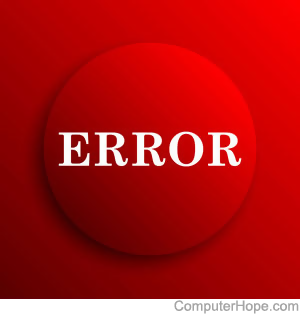Windows STOP: 0x0000007B INACCESSIBLE_BOOT_DEVICE error
Remove any new hardware, discs, and USB drives

If you've recently installed any new hardware, remove it to verify it's not causing your issue. Next, make sure no discs (CD (compact disc), DVD (digital versatile disc), etc.) are in any drive. Finally, disconnect any USB (universal serial bus) devices from the computer, including any thumb drives, external backup drives, iPod's, etc. to verify they're not causing the issue.
New hard drive
If you've recently installed a new hard drive and are encountering this error after installing the new hard drive, it's likely because it's not configured properly. If the new hard drive is an IDE/EIDE hard drive, make sure you have the jumpers for that drive and any other drive connected on the same cable properly configured.
Check boot sequence in CMOS setup
Verify your boot sequence is properly configured in the BIOS setup. We recommend your boot sequence be set to CD-ROM/Disc drive first and the hard drive second.
If UDMA (Ultra Direct Memory Access) is available and enabled in CMOS, we also suggest disabling it to determine if it's causing the issue.
Finally, if any changes are made in CMOS setup, make sure to save the changes before exiting.
Use last known good configuration
If you can get to the Windows advanced boot options menu (where you can choose between "start Windows normally," "start Windows in safe mode," etc.), choose Last known good configuration.
Run chkdsk and fixboot from the Recovery Console
From the Windows Recovery Console, run chkdsk /f and fixboot to check for any hard drive errors and fix any issues with the boot files.
Inaccessible boot device during Windows setup
If you're installing Windows or recently installed Windows and get this error, it could be caused by any of the below possibilities.
Device driver for hard drive not loading
If you have SCSI (small computer system interface) or RAID (redundant array of independent disks) setup on your hard disk drives, it may be necessary to load the third-party drivers during setup. As setup starts, a prompt to "Press F6 should appear if you have to install a third-party SCSI or RAID driver". Press the indicated key and make sure to load the proper drivers for your hard drives.
Windows 2000 and Server 2003 using USB CD-ROM
If you've installed Windows 2000 or Windows Server 2003 using a USB CD-ROM drive, see KB883114 for a patch that applies to this issue.
Reinstall Windows
If you're not encountering this issue during the install of Windows or immediately after reinstalling Windows, we'd suggest following the above steps to reinstall Windows. To verify this isn't a hard drive issue, we suggest during the setup, you delete and recreate all the partitions on the hard drive, format the drive, and then install Windows. If you encounter any errors during the format process, the hard drive is likely bad and was the original cause of your issue.
Bad hardware
Finally, if after all the above steps are followed, you still cannot install or boot into Windows, you may have a hardware problem. Your computer may have a bad hard drive, bad cable, or bad motherboard connection. We suggest first replacing the hard drive in the computer.
